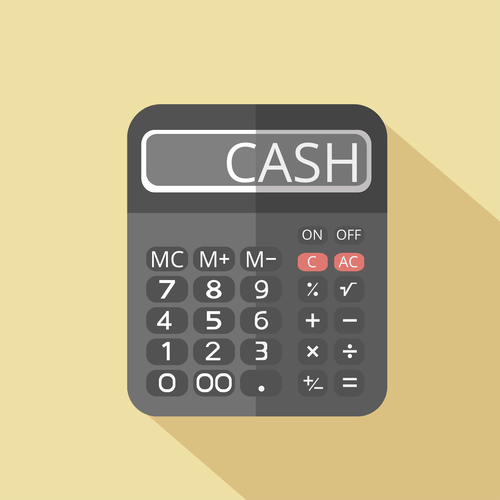
That money is credited to the receiving bank, which pays the beneficiary. So the bank balances change, but they communicate electronically, and there’s no physical movement of money. An EFT payment usually takes between one to four business days to process. However, factors like bank processing times, weekends and holidays, and transfer types can impact how long the payment will take.
Types of electronic funds transfers
Cash and personal checks are a convenient way to complete transactions locally and in person, but for conducting business on a larger scale, these payment methods aren’t always ideal. Electronic transfers are more secure, since the sender’s tracking and routing number don’t appear to the recipient. Consumers also like them because they don’t have to worry about ordering paper checks or buying postage and envelopes to send out payments.
Direct deposit
- EFT payments are more secure and efficient than traditional paper-based payment methods such as paper checks.
- Cash and personal checks are a convenient way to complete transactions locally and in person, but for conducting business on a larger scale, these payment methods aren’t always ideal.
- The term “EFT” stands for “electronic funds transfer.” By definition, it is a blanket term for electronic transfers for payment processing.
- This includes ACH payments and direct debit payments, as well as many more.
- The ABA routing number that you’ll find on your checkbook will be fine for paper check transfers.
The ACH network connects all banks, credit unions, and financial institutions in the United States. There is also an ACH global network to send what is an eft money internationally. Buyers can purchase cryptocurrency like ether (Ethereum) or Bitcoin online with an EFT (electronic funds transfer) that may be an ACH from a bank account or an approved bank debit card or credit card transaction.
What Is an Electronic Funds Transfer?

Once a payment is initiated, messages are passed on through digital routes to move money from one account to another without any human what are retained earnings intervention. This guide will teach you how to design an effective checkout process for cross-border payments, with a specialized focus on the trending emerging markets. This is a casual transaction, and it occurs during a phone call. Usually, the payee will supply their information, typically a card number, to the recipient over the phone. EFTs also come with the risk of transactions that happen in error.
Finance has become increasingly digitized since the Federal Reserve implemented the Electronic Funds Transfer Act in 1978. Today, money has more in common with computer data than ordinary cash. It’s important that small business owners understand why contactless payments are on the rise and how they meet customers’ desires for convenience. As well as being a handy way to get paid, EFTs are commonly used to make one off and recurring payments, like your rent, utilities or subscriptions.
Can I track the status of an EFT payment?
You also can set up alerts with your bank—sent via text and email—that can help draw attention to transactions that aren’t authorized. And EFT technology makes it easy to do business where you want. You can buy groceries from your living room and tip your Uber or Lyft driver from your mobile device.

What’s the difference between an ACH and EFT payment?
- Person-to-person or “P2P” payments allow a consumer to send money to another person without needing to write a check, swipe a physical card, or exchange cash.
- There are lots of different banks in the US, but they’re all connected together via a system of numbers they call ‘routing numbers’.
- She is a former CFO for fast-growing tech companies with Deloitte audit experience.
- That money is credited to the receiving bank, which pays the beneficiary.
- Electronic funds transfers allow you to send and receive money faster than you would with a check.
And some American banks don’t offer transfers online at all, meaning that you have to make a special trip to your local branch to sort it out. Wise does everything online and uses the only real exchange rate – like the one you’ll find on Google – and only charges one transparent, low fee. There are many different types of EFT payments, so you’ll encounter them in contexts that will feel very different from each other – from buying groceries to receiving your salary. What they all have in common is that they begin with the payer applying for and authorizing the payment. Once the bank details have been sent, the payer has the money taken from their account.
- The use of EFT first appeared in the 1960s with the introduction of the automated teller machine (ATM).
- When you register to use one of these applications, you can link your debit card, bank account, or both.
- However, the term “EFT” doesn’t refer to a specific type of payment.
- Find out how GoCardless can help you with ad hoc payments or recurring payments.
- Another example of a digital transaction made possible by EFT technology is a debit or credit card transaction.
- Direct Deposit of payroll in an employee’s bank account is another type of EFT, using ACH.
- Moreover, it describes the nature of a transaction or payment being transferred from one account to another via electronic means.

Direct deposits are also sometimes referred to as ACH payments, and in the US they’re operated by Nacha¹. Consumers also choose to use recurring bill pay from a bank account as an ACH Direct Debit to pay recurring mobile phone service bills, streaming services, and utility bills. Learn how to expertly execute global payments for streamlined accounts payable and business efficiency. A digital check is generated upon the payer’s authorization of this payment.
Tell us about your business

In addition, the use of EFT processing prepares businesses for tomorrow’s economy with dependable and safer methods for issuing payments. To understand Grocery Store Accounting the EFT meaning and definition more fully, you need to review its history. EFTs are one of the more popular payment options for moving money around the world. They are accessible to businesses of any size, straightforward to use, and eliminate the need to send paper checks or cash anywhere.

